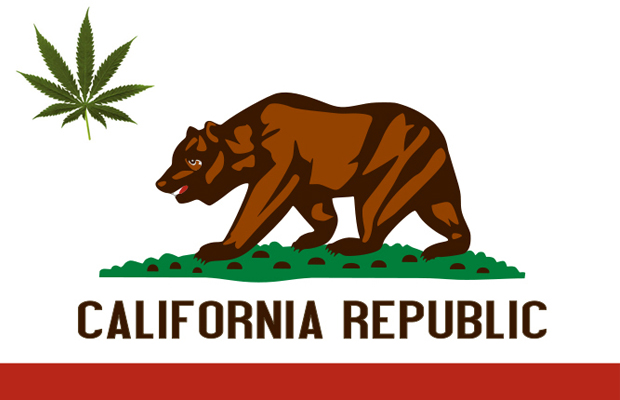
Legal
California’s Legal Issue
California boasts the world’s eighth largest economy, larger than even Russia. San Francisco Weekly’s Chris Roberts recently estimated the demand for legalized marijuana in California to be $2.1 billion. The estimate, initially reported at $2.1 trillion, was based on the numbers coming out of Colorado scaled to fit the Golden State.
California supplies the nation with food, wine, technology and entertainment, and its politics have controlled it thusly. This year alone billionaire venture capitalist Tim Draper has financed a ballot initiative that would split the state into six smaller states, creating the wealthiest state in the nation — Silicon Valley. Californians have even elected two entertainers to the state’s highest office twice — Governors Arnold Schwarzenegger and Ronald Reagan. However, while one of the state’s largest cash crops has long been marijuana, much of it is still produced for export on the black market and cannot be accurately counted in any of the state’s formal financial estimates.
Northern California is so dependent on cannabis farming that the residents of those parts of the state fear their way of life hangs in the balance every time the question of legalizing marijuana is posed. In 2011, Humboldt County presented a conservative estimate of $400 million annually in marijuana revenues, or 25 percent of the total commerce of the county. The estimate was intentionally conservative, the actual numbers are likely far higher.
Considering California has the oldest and most established cannabis industry in the nation — it was the first to pass medical marijuana legislation nearly 20 years ago — it’s curious that marijuana is not legal in the Golden State like it is in Washington or Colorado.
While drug war profiteering will, of course, always comprise the opposition, marijuana isn’t legal in the state yet because legalization is a complicated term in California.
What Does Legal Mean?
What legal means seems to be the $2 billion question. While a majority of California voters support legalizing marijuana, there isn’t exactly a unified vision on what that looks like.
In 2009, Oakland-based Oaksterdam University founder Richard Lee put up $1 million of his own money to collect signatures for a ballot initiative to legalize marijuana in the state. Proposition 19, the “Regulate, Control and Tax Cannabis Act of 2010”, qualified for the ballot and became the center of contentious debate and infighting within the cannabis industry that ultimately resulted in its narrow loss. The schisms that formed in the cannabis industry and movement from that election still exist today.
“I think the issue can’t wait,” Lee told The Atlantic in 2009. “We’ve been proven right that the campaign has made this a legitimate political issue and it’s been real nice to have a lot of the people who were against it last year call me up and thank me this year for doing it.”
Prop 19 succeeded in making cannabis legalization a national conversation and two years later voters in two states passed similar legislation.
One of the major points of contention with Prop 19 was the “tax and regulate” portion. Many still fear that whatever profit to be made on legal cannabis would be made by very few, creating California-based corporate cannabis. Others felt that the windfall in taxes generated by a heavily-taxed cannabis industry would be the only way to convince those on the other side of the issue to vote in favor.
Money and control of capital has always been central to the debate over legalization. The price of a pound of marijuana has been steadily dropping since the Green Rush began in 2009. What used to be averages of $3,000/pound yields is now down to about $1,000/pound — the number Roberts used to estimate demand. Some farmers worry that as marijuana becomes “legal” the prices will drop further and they will be forced out of not just their business but also a way of life that spans generations in Northern California.
Some advocates argue that California’s system is already better than a “legal” system because anyone who wants marijuana in California can get it and that Proposition 215 is actually a more realistic approach to safe cannabis access that is less complicated than defining “medical” versus “recreational” marijuana use.
According to Bay Area cannabis activist Dragonfly de la Luz, “California law [Prop 215] is centered around the concept that, rather than recreation or intoxication, all cannabis use is medical.”
Proposition 215 co-author and proponent Dennis Peron says the nation’s first medical cannabis legislation is based on the concept that all cannabis use is inherently medical. Peron says he hadn’t actually heard the term “recreational use” until he and other activists began advocating for medical use.
“Millions of people take pharmaceuticals for the same reasons [they use marijuana]: to overcome anxiety, to get a good night’s sleep, increase appetite, kick-start libido, reduce stress and induce relaxation,” says Peron.
Legal wording matters and defining legalization in California also means drawing lines in the sand because there is no unified goal of legalization and no unified view of what it means. In the birthplace of the nation’s cannabis industry some interests are political and some are humanitarian but most are financial.
Money & Politics
Besides opposition from within the cultivation industry, many advocates believe Prop 19 failed because 2010 was a midterm election year which meant far less young, socially liberal voters turned out to vote than during a presidential election. The lack of unity between separate factions deterred any initiative qualifying for the ballot in the next presidential year, 2012, the year Colorado and Washington voted for adult use legalization. The same reason deterred funding behind four separate initiatives that would have been run in the state this year.
Unlike most states, California does not have one economic center and the interests within the cannabis industry are as diverse as the state’s geography. If Draper’s “Six Californias” proposal happens, expect most of the marijuana to travel across state lines from the State of Jefferson to get to the population centers in the new states of Silicon Valley and West California, complicating the entire industry further.
In the existing unified California, there are multiple groups throughout the Emerald Triangle, the San Francisco Bay Area, the Los Angeles Metropolitan region, Sacramento/Central Valley and San Diego that have established regional cannabis industries with their own different political and economic interests. It’s fair to say there has been a struggle for control and special interests that prevail regionally.
“Ego and greed have stagnated cannabis legalization in California,” says Susan Soares, executive director of Southern California-based non-profit advocacy group C.A.R.E. “That goes for the marijuana reform community, the cannabusinesses, the micro businesses and even the ‘patients’ themselves. Everyone wants to be on top.”
Soares says greed plays an equal role to ego in the state’s well-ingrained medical marijuana industry. She says while capitalism is to be expected in a lucrative industry like California cannabis, the industry has the opportunity to embrace its cultural roots and leverage the money it generates towards greater social good.
“California can craft elegant legislation, which would mean protecting the mom and pop businesses and the family farm, which is back to our roots as a nation,” Soares continues. “We have an opportunity in California to make pot ‘legal’ here the right way.”
What is the right way to legalize marijuana in California? That depends on whom you ask.
Which Voters Need to Be Targeted?
The issue at hand comes down to the stakeholders and shareholders of legal cannabis, the most profitable industry in one of the world’s most profitable regions.
The stakeholders, or all those who have a personal stake in California’s marijuana laws, include the cannabis cultivation industry; the cannabis dispensary industry and ancillary industries; medical users; Californians benefiting from programs fueled by cannabis tax revenues; advocates and prisoners opposed to the Drug War. The stakeholders also include the now-dwindling demographic of aging conservatives who believe marijuana legalization will result in the entire state being stoned all the time, on the roads, while performing open heart surgery or anywhere in public — at its core undermining the very fabric of society.
The shareholders will be whoever benefits the most financially from how the laws will be and are written, namely the State of California (or Californias) itself. Everyone wants their cut of the $2 billion pie.
Clearly, there will never be one initiative or bill that can please the diverse pro-cannabis groups in California. What legal means in California will depend on who defines it, where the money comes from and when it happens.
What do you think? Why isn’t marijuana legal in California yet?
*Although Roberts initially reported the $2.1 trillion figure, the number has since been corrected to $2.1 billion.


























